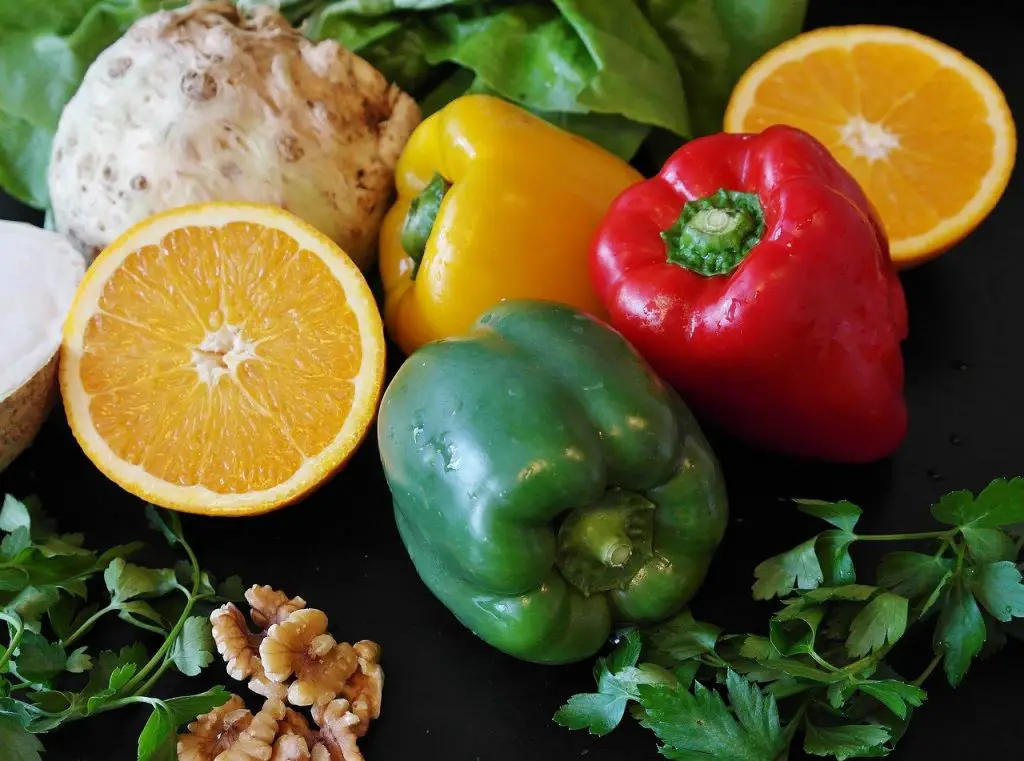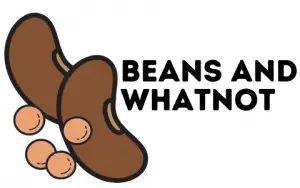
Beans, lentils and chickpeas are fantastic foods, and we all know that they’re great, nutritious additions to a balanced diet. But, since they’re technically legumes rather than vegetables, are we allowed to count them as one of our recommended 5 daily fruits and vegetables?
An 80g serving of beans, lentils or chickpeas can count as one of your 5 A Day. However, you can only count them once (so you couldn’t count beans and lentils as two of the five), because although they’re great sources of fibre, they contain fewer nutrients than most other fruits and vegetables.
Pulses like beans and lentils are super nutritious, and we should definitely be including them in our diets, but their nutritional content is slightly different to most other fruits and vegetables. Here’s everything you need to know about your 5 A Day, and how you can count beans, lentils and chickpeas in your total.
What is 5 A Day?
If you live in the UK, you probably know that the NHS recommends that everyone eats 5 portions of fruits and vegetables every single day. This can include fresh fruit and veg, as well as tinned and frozen, and even dried fruit and fruit juice (see below for details!)
Obviously each different type of fruit and veg contains different vitamins and minerals, so 5 daily portions is generally recommended as the right amount to ensure we’re getting a wide variety of nutrients.
Should we eat more than 5 A Day?
Of course, there’s nothing at all wrong with eating more than five portions of fruit and veg each day – it should be considered a target, not a limit. In fact, a study conducted by Imperial College London (Aune et al, 2017) found that the greatest health benefit actually came from eating 800g of fruits and vegetables every day – more like ten portions!
According to the study, 10 daily portions of fruit and veg was found to be associated with:
- 24% less risk of heart disease
- 33% less risk of stroke
- 28% less risk of cardiovascular disease
- 13% less risk of cancer
- 31% reduction in dying prematurely
The higher the intake of fruits and vegetables, the lower the risk of each of these diseases. So really, the more you can eat, the better.
However, I suppose the NHS thinks that telling people to eat ten portions every day might seem a bit overwhelming (one tester of this diet said eating ten portions a day made them feel like a ‘sentient composter‘).
So, the current recommendation remains – we should all aim for at least 5 daily portions of fruit and veg.

What foods count towards your 5 A Day?
Obviously, all fresh fruits and vegetables can count as one of your 5 A Day. A fresh portion is considered to be 80 grams.
For small fruits and vegetables, you may need to eat more than one to count as a full portion. And for much larger ingredients, it might be that just one large slice is sufficient.
Here are a few examples of 80g portions of fresh fruit and vegetables:
- 2 kiwi fruits
- 1 apple, pear or banana
- 2 large broccoli florets
- 3 heaped tablespoons of peas or sweetcorn
- 1/2 grapefruit
- 2 plums or satsumas
- 7 strawberries
- 5cm piece of cucumber
- 7 cherry tomatoes
Potatoes do not count as one of your 5 A Day, because they’re considered a ‘starchy food’, rather than a true vegetable. If they’re served with a meal, it’s usually in place of a starchy food like rice or pasta, rather than as a vegetable.
Do tinned and frozen fruits and vegetables count as one of your 5 A Day?
Frozen and tinned ingredients are no less healthy than fresh, and they can be counted just like their fresh versions. For example, 80g of tinned sweetcorn or frozen peas would also count as one portion.
Just be aware that tinned fruit and veg can sometimes have additional ingredients, like salt and sugar. Try to buy tinned vegetables in water, rather than salted water, and tinned fruit in juice, rather than in syrup.
Does dried fruit count as one of your 5 A Day?
Dried fruit can be counted too. A portion of dried fruit is only 30g, since it’s so much more concentrated than fresh fruit. This could be around 1 heaped tablespoon of raisins, 3 prunes, or 1 handful of dried banana.
However, dried fruit is high in sugar, so fresh fruit and vegetables are preferable. You shouldn’t rely on dried fruit to reach your 5 A Day.

Does fruit juice count as one of your 5 A Day?
Fruit juice, vegetable juice and smoothies can also be counted as one of your 5 A Day. However, just like with dried fruit, fruit juice can be high in sugar, so fresh, frozen or tinned fruits and vegetables are preferable.
No matter how much juice you drink, it can only be counted as one of your 5 A Day, not more. This is because when a fruit or vegetable is juiced, most of the fibre is removed from the fresh ingredient, so it’s not as nutritious as eating the whole fruit.
Now that we have a general understanding of what fruits and vegetables can count towards your 5 A Day, let’s move on to the topic and hand: beans, lentils and chickpeas!
Do beans, lentils and chickpeas count as one of your 5 A Day?
In short: Yes. Beans, lentils and chickpeas can all be counted towards your 5 A Day.

What counts as a portion of beans, lentils or chickpeas?
According to the NHS, one portion of beans, lentils or chickpeas is considered to be 3 heaped tablespoons. That should be approximately the same as the recommended 80 grams.
It doesn’t matter if you combine your pulses to create one portion. So, for example, if you had one tablespoon of beans, one tablespoon of lentils, and one tablespoon of chickpeas, you could count that as one of your 5 A Day.
However, you can only count pulses as one of your daily portions (just like with fruit juice). So even if you ate an entire tin of beans on your own (wouldn’t want to share a bed with you…), even though they’re usually more like 415g, you could still only count it as one of your five.
Why can pulses only count as one of your 5 A Day?
Pulses are great sources of nutrition. They’re full of fibre, and are a very sensible addition to any balanced diet. They’re especially useful to include in a vegetarian or vegan diet, as a good plant-based source of protein and iron.
However, pulses don’t give quite as wide a range of vitamins, minerals and other nutrients as other fruits and vegetables do. If you were allowed to count beans, lentils and chickpeas as three separate foods, you might end up eating less other fruit and veg, and therefore you probably wouldn’t be eating a good enough variety of nutrients.
And after all, the entire point of the 5 A Day guidelines is to ensure we eat a good range of different fruits and vegetables, not just to eat tin after tin of baked beans.

Are there any exceptions to the rule?
There are a few legumes that can be counted separately to other beans, lentils and chickpeas.
These include green beans, broad beans and runner beans, which can be counted separately, as a fresh vegetable. They contain a slightly different range of nutrients to other legumes, so can be counted on their own.
I hope that’s cleared up some questions about whether or not beans, lentils and chickpeas can be counted as one of our 5 daily portions of fruits and vegetables. As you’ve seen, the key is really to eat a good variety of food, so as long as you’re not eating the same few vegetables day after day, you should be fine.
If you’d like to find out more about your 5 A Day, check out the NHS Change 4 Life website.
